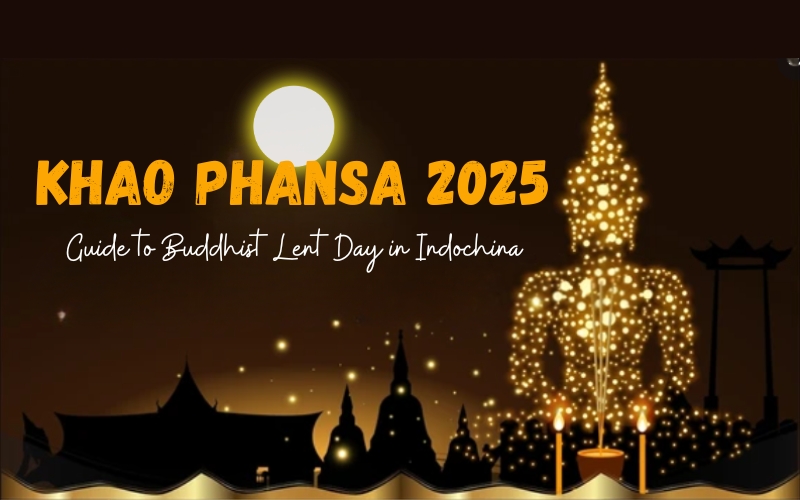
If you’re travelling through Indochina in the middle of the year and want to experience something truly local and spiritual, Khao Phansa is a must-see. Celebrated in Thailand, Laos and Cambodia, this Buddhist holiday marks the beginning of a retreat for monks and is filled with meaningful rituals and vibrant cultural activities. In this guide, we’ll walk you through the festival, how it differs from region to region, and how you can participate in a respectful and rewarding way.
What is Khao Phansa Day (Buddhist Lent)?
Khao Phansa is a Buddhist festival celebrated around the world. It has many names, but is known internationally as Vassa, or the Buddhist Lent Day. Another name for Khao Phansa is the “Buddhist Rains Retreat” because it falls at the beginning of Thailand’s rainy season and because Buddhist monks take the opportunity to retreat to their temples for three months. Many monks enter monastic life on Khao Phansa Day, staying in monasteries and temples until the rainy season ends on Wan Ok Phansa Day. This period is for Buddhist monks to retreat, meditate and study.
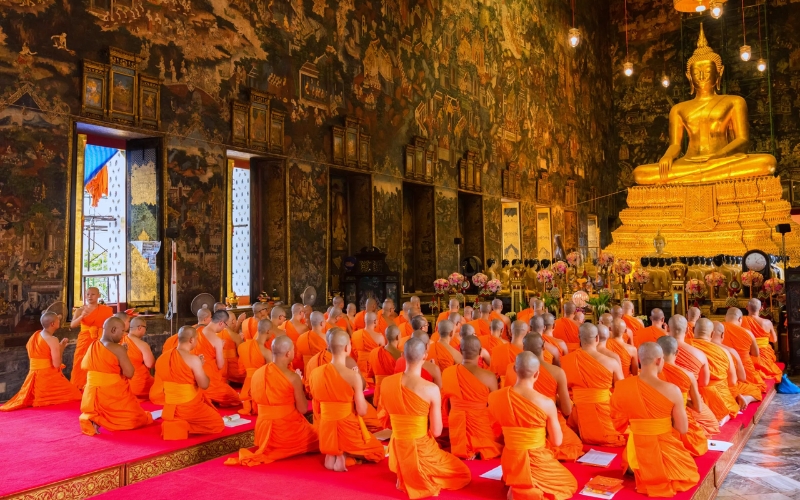
Monks begin their retreat on Khao Phansa Day
On this day, many Buddhists will be vegetarian and abstain from alcohol, tobacco and gambling. But Khao Phansa is also a vibrant, colorful festival where visitors will encounter beautiful and elaborately carved candles that turn out to be the centerpiece of the celebration. Traditionally, the candles would be given to monks, who would use them to continue their studies after sunset. Today, the candles take the form of giant wax statues and are displayed in local parades.
When is Khao Phansa Day in 2025?
Start Date: July 10, 2025
End Date: October 7, 2025
Khao Phansa Day is a Buddhist holiday celebrated on the first day after the full moon that occurs in the eighth month of the lunar calendar, usually in June or July and ending around September or October. This year, the Buddhist Rains Retreat will last from July 10 to October 7, 2025.
How locals celebrate Khao Phansa
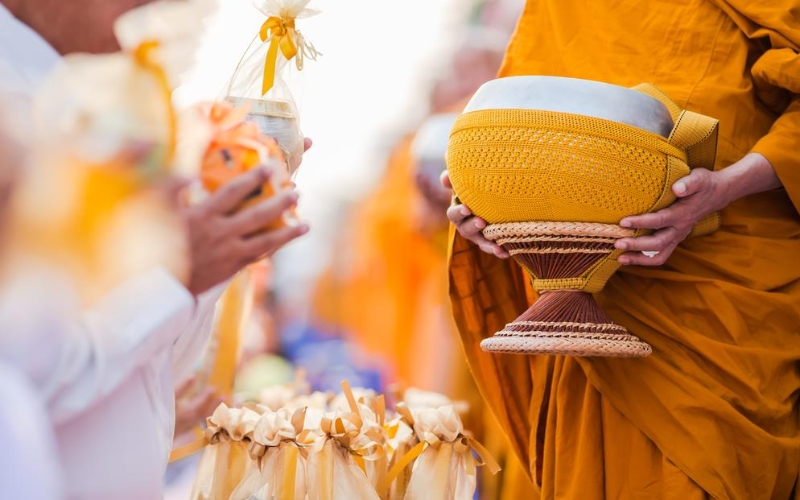
Offering alms, a sacred start to Buddhist Lent
Early in the morning of Khao Phansa, people prepare food (especially khaotom, rice, bananas or pork wrapped in banana leaves), large robes and necessities such as soap, toothpaste, toothbrushes and towels for the monks. They will then gather at the temples, listen to the Buddha’s teachings and make offerings to the prepared Buddha.
At the end of these merit-making activities, the monks will recite the Buddha’s teachings and recount the history of Lent to the temple-goers. In the evening, monks, novices and lay people carry flowers and candles and walk around the central temple three times. They believe that offering candles will make their future brighter, stronger and longer. During this time, Buddhists will also abstain from alcohol, some will even abstain from tobacco and be vegetarian. They will focus on praying and spending time doing charity to create merit for their deceased relatives.
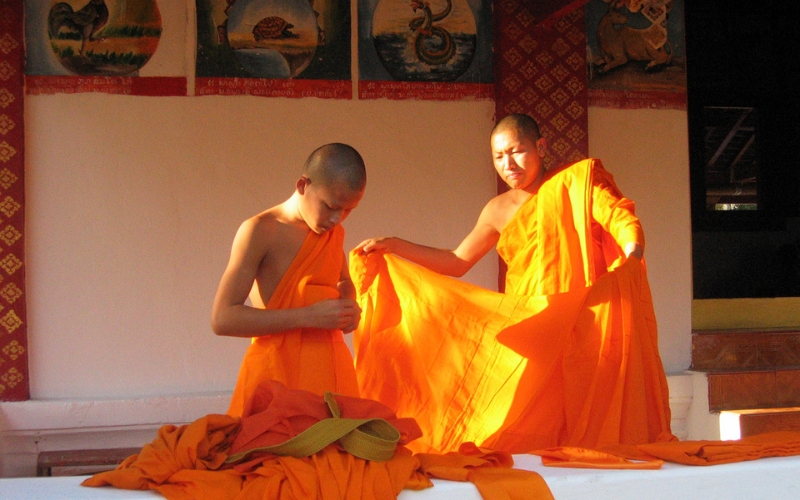
Preparing for Monkhood during Khao Phansa
These are the most common months for men to be ordained as monks for a short period of time. Although many will not continue to live as monks, they go through this process to meet the expectations of their families. Young men enter the temple to practice spirituality, to accumulate merit for themselves and their parents. It is believed that a man who has become a monk will lead his parents to heaven because renunciation is a symbol of purity and happiness. For this reason, most of them prefer to become monks during this season. They have to spend most of their time studying, practicing and training themselves under the guidance of a respected monk.
How is Khao Phansa different in each country?
Laos: Boun Khao Phansa
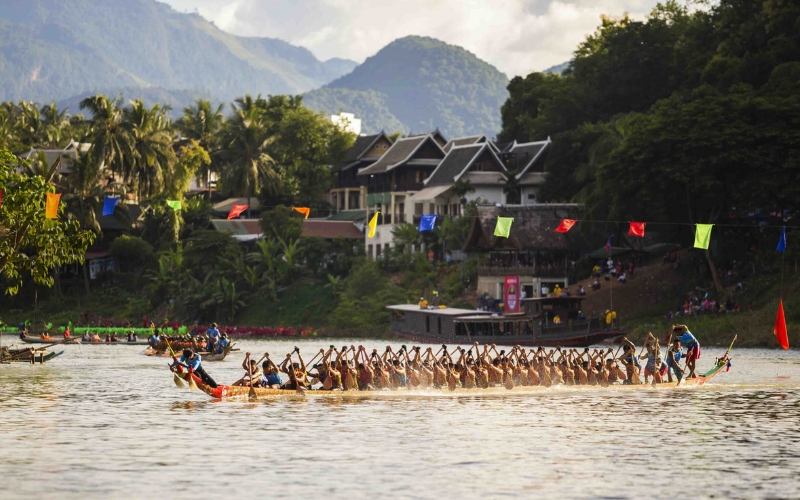
Traditional boat race on the Mekong River, Luang Prabang
Imagine waking up to the gentle sound of temple bells and the relaxing atmosphere of early morning. Early in the morning on the first day of Khao Phansa, people will participate in a morning almsgiving ceremony with items such as food, large yellow robes and other necessities needed by monks during their practice. Most temples are very busy during this time with people making merit and making offerings.
At the end of these activities, monks will recite Buddhist scriptures and recount the history of Lent to temple-goers. You can sit among the crowd, listening to stories about Lent that have been passed down through the generations. In the evening, Lao people hold a candlelight procession around the temple grounds, often walking three times around the main stupa while holding incense, flowers and candles. This is a deeply meditative act, focusing on inner peace and reverence for the Buddha.
In the middle of Buddhist Lent on the full moon day of September, some provinces in Laos, especially Luang Prabang, will hold boat racing festivals. The first race is women dressed in black and white to open the competition. Then the game begins. People line the riverbanks to cheer on the boat fans, creating a lively and exciting atmosphere.
> > > If you’re seeking a more peaceful, soulful way to experience Khao Phan Sa, Laos is the perfect place to start, with its quiet temple rituals and deeply rooted traditions. Let’s explore our Laos tours for unforgettable insight into the spiritual heart of the country.
Thailand: Wan Khao Phansa
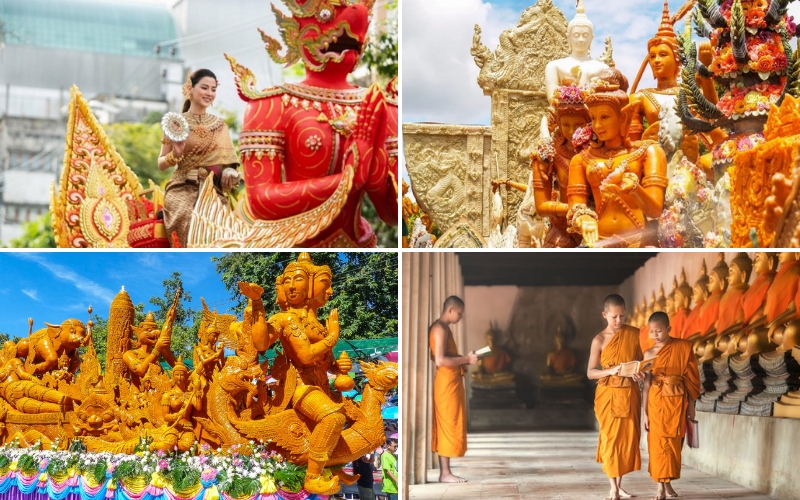
Khao Phansa in Thailand is a combination of vibrant candle parades and traditional ceremonies
Similar to Laos, during the Buddhist Lent, Thais will also make offerings to local monks, usually food, clothes and robes. What makes this festival unique in Thailand is the candle making ceremonies that take place during the festival. Local artisans share their artistic skills through intricate wax carvings that are then donated to temples and the monks inside. Some of the major candle festivals across Thailand include:
- Saraburi: Here, at the Buddha Footprint Temple, people from all over Thailand gather to admire the offerings of yellow and white flowers given to monks as they climb the stairs to the Buddha’s footprint. You can see worshippers washing the monks’ feet to atone for their sins. Also check out the Saraburi Candle Festival, where you can see uniquely carved candles lit and carried in a night parade.
- Ubon Ratchathani: This is where Thailand’s most famous candle festival is held. You’ll see intricately carved candles made from beeswax in every shape and size imaginable. The candles are placed on floats and carried around town, eventually being sent to local temples.
- Surin: There’s also a candle festival, but alongside it, there’s also a merit-making ritual performed on elephants. This takes place at a local Buddhist site called Phaya Surin, where around 100 elephants are ridden by the highest-ranking monks in the community.
Cambodia: Vassa
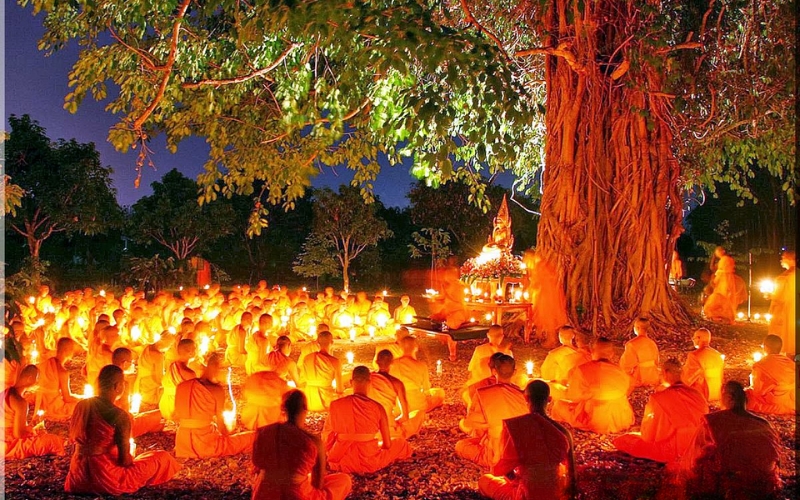
Pagoda rituals in Cambodia during Vassa
Though quieter and less flashy than the candle festivals in Thailand or Laos, Buddhist Lent, or Vassa, in Cambodia, offers a more intimate, authentic look at the country’s spiritual life. Rather than parades or public displays, most Cambodian celebrations take place at local temples, especially in villages where Buddhist practice remains central to daily life.
Families rise early to prepare offerings for the monks on this day. You’ll see elders and children carefully arranging small baskets of steamed rice, fresh fruit, candles and new robes, each item carefully chosen and reverent. There are no noisy parades or grand ceremonies here, just soft footsteps and whispered prayers as villagers slowly make their way towards the temple, their hands cradling their gifts for the monks. In many places, people also bring wax candles or oil lamps to light inside the temple halls, symbolizing wisdom and enlightenment.
A unique aspect of Cambodian celebrations is the emphasis on spiritual discipline. During Vassa, many lay Buddhists choose to observe additional moral precepts such as abstaining from alcohol, eating vegetarian food, increasing their meditation time, or participating in evening chanting sessions. Temples seem to become places of community, with local elders and children gathering at the temple, creating a distinct sense of peace and unity. Many families also donate food to the entire temple, helping to support the monks during their retreat.
> > > Looking to turn your cultural exploration into a full adventure? With our Thailand-Cambodia tours, you’ll experience the vibrant, festive energy of Khao Phan Sa in Thailand and then cross into Cambodia for a more intimate, spiritual take on Buddhist Lent – two countries, two perspectives, one unforgettable journey.
How to Get to Khao Phansa in Indochina
Getting there
Most of the major cities where Khao Phansa is held are easily accessible by domestic flights, with frequent flights making it easy to get there in a short time. For example, if you are going to Ubon Ratchathani, known as the home of Thailand’s largest and most famous candle festival, it will only take you about an hour to fly directly from Bangkok. Alternatively, you can also take a car, train or bus. While this will be much cheaper in terms of time, it will save you money on transportation and is especially suitable if you love a relaxing trip and want to see the sights along the way.
Getting around the festival
Getting around the cities and towns where Khao Phansa is held can be both fun and challenging. Here are some smart ways to make your transition easier and more convenient:
- Stay close to the main event venues: One of the most effective ways is to choose accommodation near the main temples or halls where the Parade takes place. You can easily walk in just a few minutes, helping you take advantage of the lively atmosphere of the ceremony without having to deal with traffic jams or road closures.
- Use local ride-hailing apps: If you are in a big city, use reputable ride-hailing apps like Grab instead of traditional means like taxis or tuk-tuks. Foot prices will always be declared and you can also find properties faster even at peak times.
- Go on a guided tour: If you want a more comfortable and smooth experience, consider joining a package tour that includes transfers. Travel agents will handle all the issues during your trip, the best experience.
Suggested itinerary for Khao Phansa across Indochina
Itinerary 1 – Thailand
Day 1: Arrive in Ubon Ratchathani
Arrive in Ubon Ratchathani, famous for Thailand’s largest and most artistic Candle Festival, and transfer to your centrally located hotel. Spend the afternoon exploring the local markets and taking a sunset stroll along the Mun River. In the evening, visit a nearby temple to witness locals preparing to light candles.
Day 2: Explore local temples
Start your day at Wat Thung Si Muang and Wat Nong Bua to admire traditional Isaan architecture. Visit community centers where locals are carving wax figures for the upcoming parade.
Day 3: Join the Candle Festival Parade
Enjoy the highlight of the trip: the Candle Parade featuring giant wax sculptures, traditional music and dance performances. Join the locals in offering candles and flowers at the temples after the parade.
Day 4: Departure
Itinerary 2 – Laos
Day 1: Arrive in Luang Prabang
Arrive in Luang Prabang and check in to your hotel. Walk around the Old Town, visit Wat Mai and the peaceful Mekong River.
Day 2: Almsgiving Ceremony and Buddhist Evening Rituals
Wake up early to witness or participate in the sacred Tak Bat ceremony. Spend the afternoon visiting Wat Xieng Thong and Wat Visounnarath. In the evening, you can join the candle procession and chant with the monks and locals.
Day 3: Departure
Itinerary 3 – Cambodia
Day 1: Arrive in Siem Reap
Arrive in Siem Reap and check in to your hotel. Walk around the Old Market and visit Wat Bo to see the monks and locals preparing for Choul Vassa.
Day 2: Visit Sacred Sites and Blessings
Start with a sunrise tour of Angkor Wat, then explore nearby Wat Preah Prom Rath, where monks receive candle and flower offerings. In the afternoon, participate in a blessing ceremony or meditation session.
Day 3: Departure
Tips for experiencing Khao Phansa as a visitor
Planning to attend Khao Phansa on your trip to Indochina? These practical tips will help you navigate the experience with ease, respect, and a deeper understanding of the culture.
- Dress appropriately when visiting temples or participating in ceremonies: Dress modestly, wear clothes that cover your knees and shoulders, and avoid wearing anything too revealing or flashy. You may want to bring a light scarf in case you suddenly visit a temple. Don’t forget to bring a pair of flip-flops as you may be asked to take your shoes off before entering the temple.
- Respect religious ceremonies: Khao Phansa is not only a cultural event but also a deeply religious festival, so it is important to show respect. In addition to dressing modestly, there are a few rules to consider such as not pointing your toes at Buddha statues, avoiding making noise, and not touching monks without permission, etc.
- Check local festival schedules: Candlelight or Memorial Day celebrations can change depending on the weather, so check with your hotel, local guide, or tour operator for the most accurate information on event dates. And be aware that some restaurants, businesses, or attractions may close early or completely during the festival, especially in smaller towns. Check their hours in advance so you can adjust your schedule accordingly.
- Pack for the weather: The festival takes place during the rainy season, so pack light clothing and bring a folding umbrella or small raincoat in case of sudden showers in the afternoon. Roads, especially in rural areas, can become slippery and muddy, so bring waterproof sandals or non-slip shoes.
- Bring cash to donate: If you want to donate (to a monk, temple or local fundraiser during the festival), bring small denominations of local currency. The donation box is usually located near the main altar or entrance. Avoid giving coins, paper money is preferred.
- Participate in the festival activities: this is one of the most meaningful and practical ways for you to directly participate and understand the local culture and customs. You are always welcome to join in, just follow the others and enjoy the peaceful atmosphere. If you participate in the morning offering ceremony, be sure to wake up early and offer the offerings with both hands to the monks in a respectful attitude.
This article has provided you with a deeper understanding of Khao Phansa Day and how it is celebrated in unique ways across Thailand, Laos and Cambodia. From large candlelight processions to quiet temple ceremonies, each country has its own way of honoring this sacred time. With the practical tips and cultural insights shared above, you will be ready to experience the beauty, significance and local spirit of Khao Phansa in a way that is both respectful and memorable.
Read more:
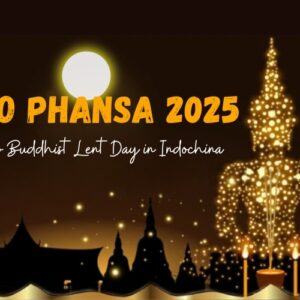

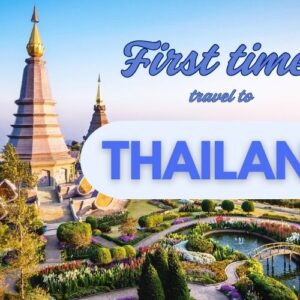

I love how you contrasted the celebratory candle parades in Thailand with the more meditative, quieter observances in Cambodia. That really helps set expectations for different travelers.
Thank you so much! I’m glad that contrast stood out to you — it’s one of the things that makes Khao Phansa so fascinating across Indochina. Thailand’s candle parades are truly a spectacle, while Cambodia’s quieter observances allow you to connect with the spiritual side of the festival. Both give such different yet meaningful experiences, depending on what kind of journey you’re looking for.
Do I need to buy a ticket to participate, or can I just come when it begins?
Dear Sir/Madam,
Thank you for reaching out to us! To join Khao Phansa events, you don’t need to buy a ticket. They’re free and open to the public. Just show up when the ceremonies begin, dress modestly, and take part respectfully alongside the local rituals.
Best regards,
IDC Travel Team.